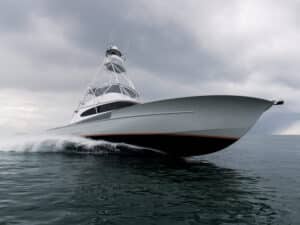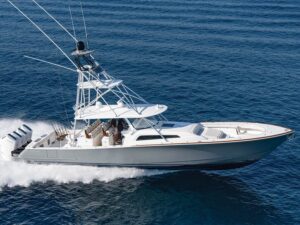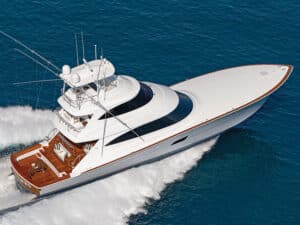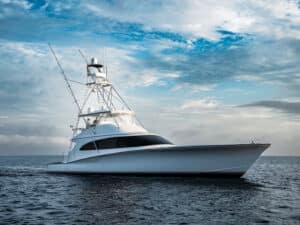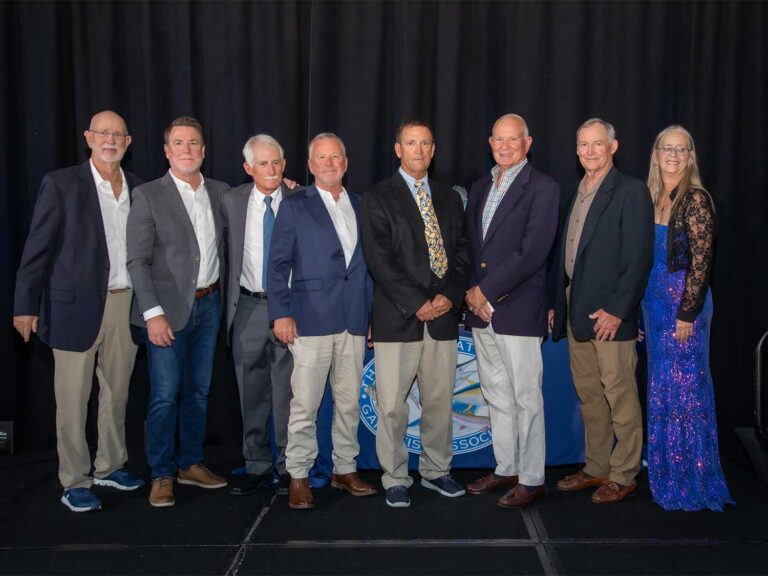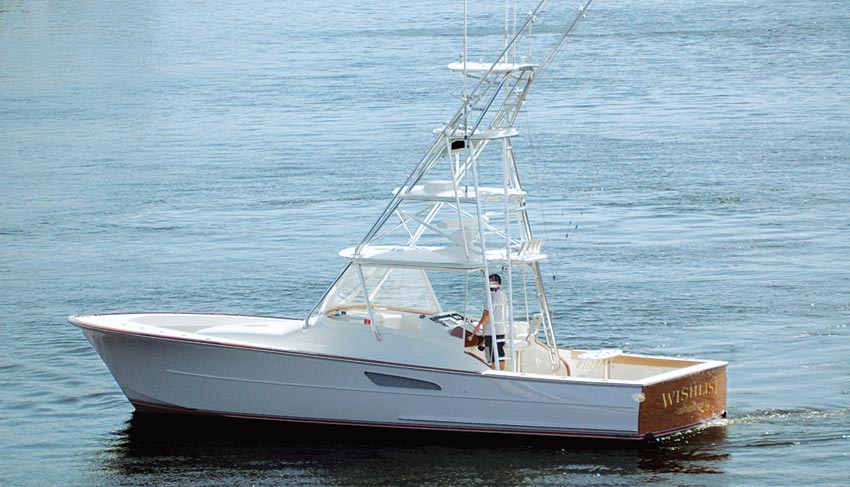
A walkaround, to me, isn’t what the industry commonly defines as an express or cuddy with a narrow walkway barely wide enough for your foot. This Willis 37 constitutes a true walkaround, with wide spaces between the narrow cabin and the gunwales, creating a full 360-degree fishing platform. And one tour corroborates what I heard from the owner: A Willis represents the ne plus ultra of custom fishing boats. Combining Mark Willis’ perfectionism with naval architect Robert Ullberg’s brilliance makes for a work of art that takes your breath away.
Performance
This boat reminds me of a button or Velcro — materials whose simple functionality makes them totally elegant. On a small boat like this, bringing the air in from the outside of the hull proved challenging. Most boats of this ilk grab ventilation for the engine room from inside the cockpit somewhere. This hull gets it like bigger boats, and like the bigger boats, the Livos Technologies air handling system aids in that effort.
I sea-trialed the new Willis 37, Wish List, out of Lighthouse Point on Florida’s southeast coast. Winds ran southeast at 10 to 12 knots, and outside the channel in Hillsborough Inlet, seas ran 3 to 4 feet. Setting the Willis beam-to the uncomfortable waves, I discovered that it offered an incredibly comfortable roll moment and gentle transitions, which will certainly be a huge benefit when kite-fishing.
With its twin Cummins MerCruiser 480 hp diesels, Wish List took a mere five seconds to plane. In fact, put the throttles forward and hold on. When the turbos on the Cummins spool up, the acceleration will plumb walk you backward. Running into the steep, close-together head sea, I added some tab to drop the bow and the Willis ran at 20 knots smoothly and dry as a bone. Down-sea, without tab, the bow rose when it met the back of each wave, didn’t swerve or bog down in the slightest.
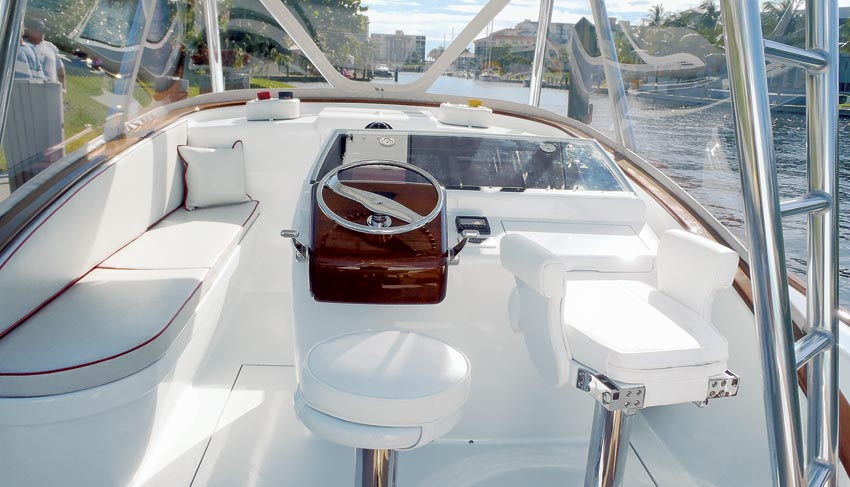
The power-steering system provides fingertip control, and when you crank the wheel hard over, the Willis banks into the turn and reverses course in the blink of an eye!
The very experienced owner generally cruises at 32.5 knots, burning about 30 gph. But a top speed of 41 knots keeps this boat in the ranks of quick. The noise level idling out of the inlet metered out to 78 decibels. Cruising speed produced 93 decibels.
Trolling at 8 knots, I found some minor surface turbulence on centerline and streaming off the hull. But amid that trailed two crystal-clear alleys for your baits.
When running a simple yet elegant boat like this, you have so little to worry about for maintenance, cleaning and handling that the enjoyment factor skyrockets. You can honestly go fishing, and with the fresh water aboard, you can have the boat and tackle washed down by the time you return to the dock.
This boat reminds me of the “good old days” in more ways than one. Certainly its elegant simplicity contributes to that sense, but the handling … oh, the handling. This is the size and style of boat that at one time served as the holy grail of serious offshore fishing. Quick and agile, backing down straight and true, and reversing direction with the reflexes of a quarter horse, this boat does it all with grace and style and no fanfare.
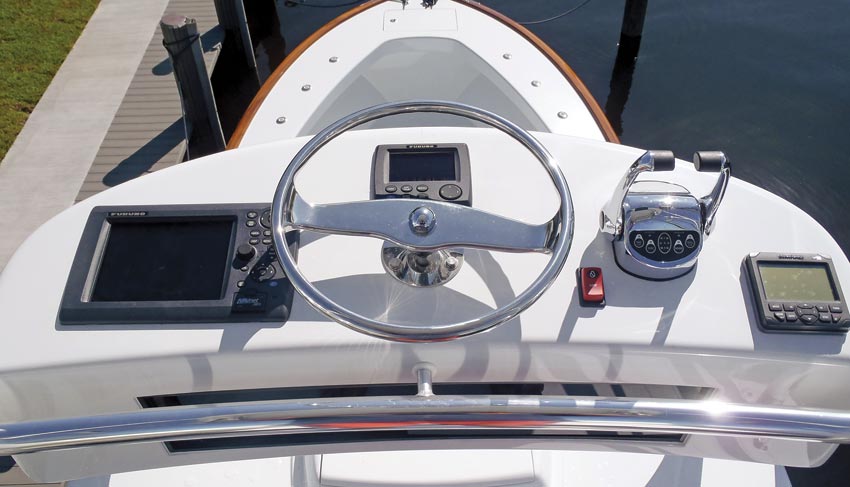
Cockpit
The owner fishes out of Pompano, Florida, and that means mostly live-bait fishing. You need only some pretty basic essentials for this style. The minimalist philosophy carries over into the cockpit layout. Three pressurized in-deck livewells — 100- and 70-gallon aft and a 30-gallon forward — ensure that your expensive and fragile liveys will be in perfect condition when you reach your ultimate fishing destination. The built-in transfer livewell on the bow eliminates the need to constantly walk back to the aft wells. Bluewater built the sailfish pod in the cockpit.
Remote condensing units serve the cold boxes, including the drink box under the starboard seat just forward of the console. Power points in storage lockers under the gunwales supply power to the kite reels.
Designing and executing a tower that enhances rather than clashes with the profiles of a boat of the type is a real challenge. Palm Beach Towers did a masterly job of matching the tower to the lines of the boat. I particularly like that you can climb into the tower without needing to crawl on your hands and knees.
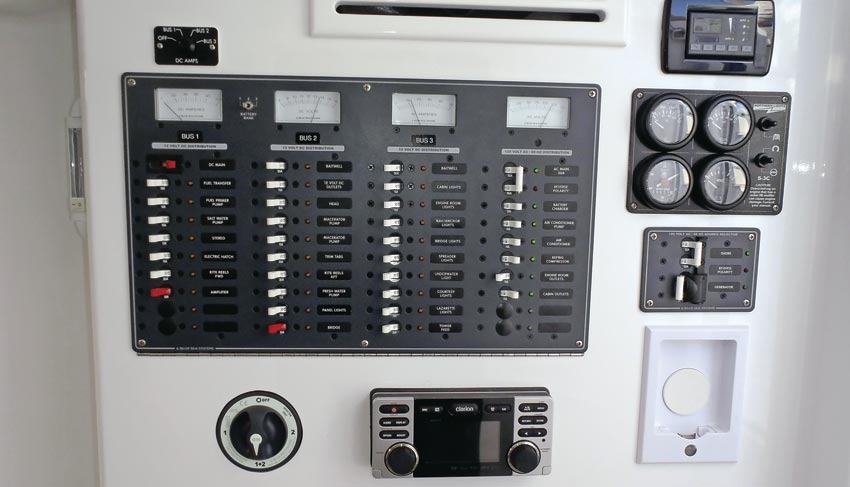
Interior
You’ll instantly get the sense of an old-fashioned day boat belowdecks. But don’t let the Spartan ambience fool you. The joinerwork and systems below qualify as 21st century. For example, avid kite fishermen always carry helium with them for those light-air days when the kite needs some assistance staying up. They fill a large balloon with helium and tape it to the kite. For this, Willis has a dedicated locker in the cabin that houses a helium canister. However, the fill nozzle is located remotely in the cockpit. When you want to refill the tank, simply pop out the canister and take it to your local helium fill station.
Consistent with the day-boat motif, the Willis 37 has basic V-berths here along with a head. Nobody plans to sleep aboard, but rest assured, the air conditioning can freeze the sweat in your shirt in minutes!
Engine Room
Like an express boat, the Willis has both a day hatch and deck rams to afford you access to the engine compartment. Lift the engine hatch to find plenty of work space on centerline and outboard of the engines. Otherwise, the standard hatch in the bridge deck affords quick access for emergencies or fast routine checkups.
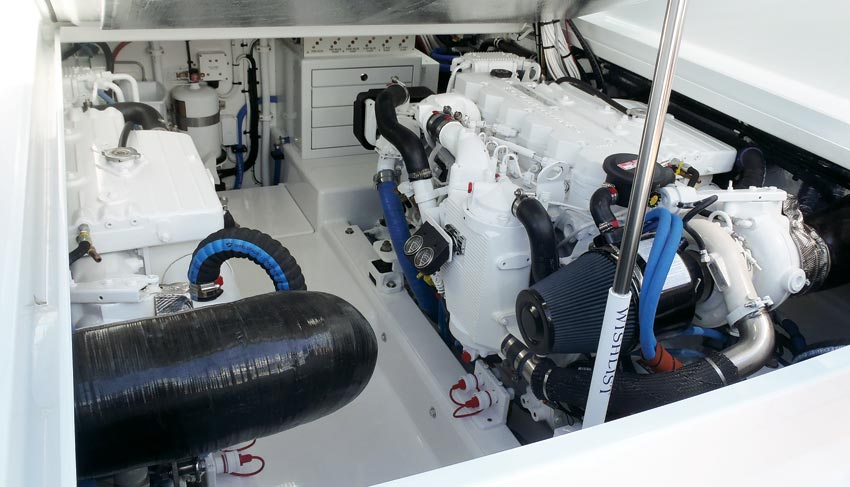
Also like bigger boats, the 37 has numerous quick disconnects for oil changes, hoses and the like. The 6 kW Northern Lights generator fills one corner and a custom toolbox occupies the other. All pumps are mounted with manifolds, and each livewell has a backup pump. Pumps can be replaced in a matter of minutes, and all feed from a dedicated sea chest.
Design and Construction
Willis built the 37 hull using cold-molded/laminated Okoume marine plywood and epoxy resins, all covered with layer upon layer of glossy Alexseal paints. The decks and superstructure are foam-core composite.
Making something stupidly simple is infinitely harder than making it complex. That’s why I love the hatch arrangement for the cabin. Much like what you might find on a sailboat, a flat panel lifts and slides on a slight angle down into a slot in the deck. No bi-fold or side-sliding door to open and get in the way or to accidentally close on you in a beam sea. The cover over the electronics works the same way.
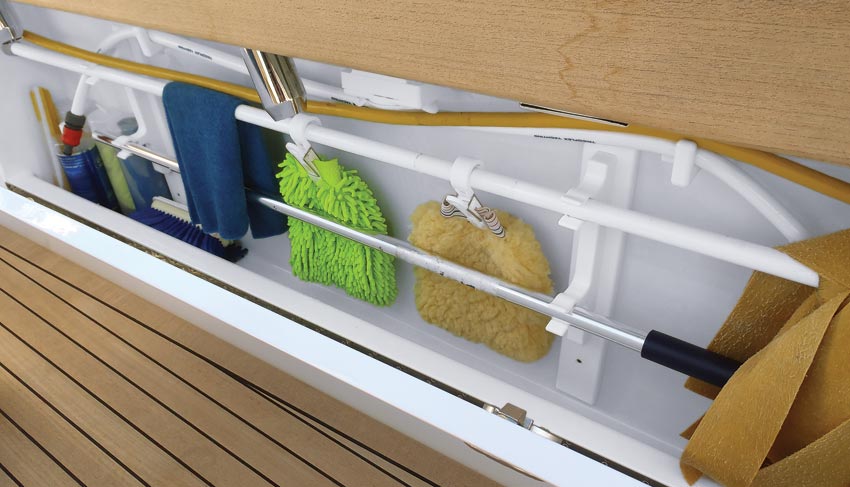
Rather than expensive and heavy teak and holly below, Willis stipulated cork flooring belowdecks, hearkening back to old 1960s vintage Rybovich boats. The surface looks like teak and is virtually indestructible and easy to maintain. Rod storage hides under the port V-berth and dry storage under starboard. Since, as I mentioned, nobody plans to spend the night aboard, no insert was requested for the V-berth.
An interesting storage system gives each person aboard their own little cubby for stowing their backpack and valuables. There’s no dinette table below, either. Everything is wide open, with unfettered access to the iPod stereo receptacle, breaker switches, etc. The interior may be stark, but it’s still so elegant!
An anchor locker large enough to handle a plow anchor, along with storing fenders, dock lines and the like, can be reached through a hatch in the foredeck.
The elegance continues with the gorgeous teak trim around the cabin, toe rails and design elements elsewhere. The radius curve of the teak trim around the cabin sides and toe rail is accomplished by stagger-laminating the butt splices together rather than using a single-thickness piece. In the sometimes oppressive Florida heat, a single-thickness piece tends to crack where a staggered splice gives the trim greater flexibility.
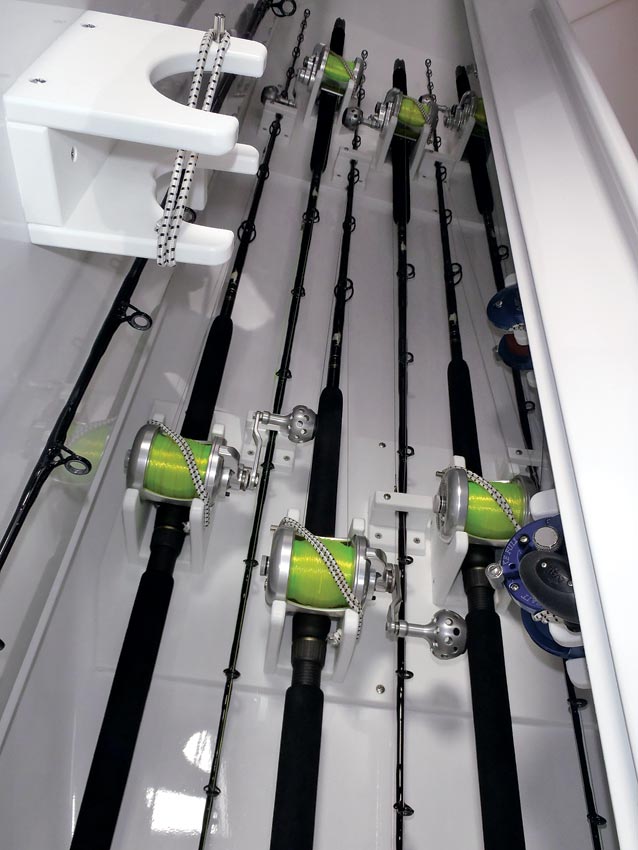
Since you can fish your way all the way around the perimeter of the boat, Willis placed the spring and stern cleats under the gunwales with corner hawse holes in the transom and in the cap rails amidships.
This Willis 37 is truly a boat for the times. As custom fishing boats go, this one is affordable to build, affordable to maintain and affordable to run. Admit it: 30 gph at cruise is most respectable, especially compared to larger boats burning four times that amount. As Ullberg says, “A small boat doesn’t have to be a little boat!”
Willis 37 Specs
- LOA: 37′
- Beam: 12’2″
- Draft: 3’1″
- Deadrise: 11 degrees (w/ prop tunnels)
- Weight: 21,000 lbs.
- Fuel: 350 gallons
- Water: 50 gallons
- Power: Twin 480 hp Cummins QSB5.9 diesels
- MSRP: Upon request
